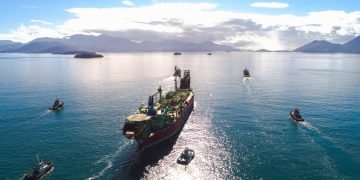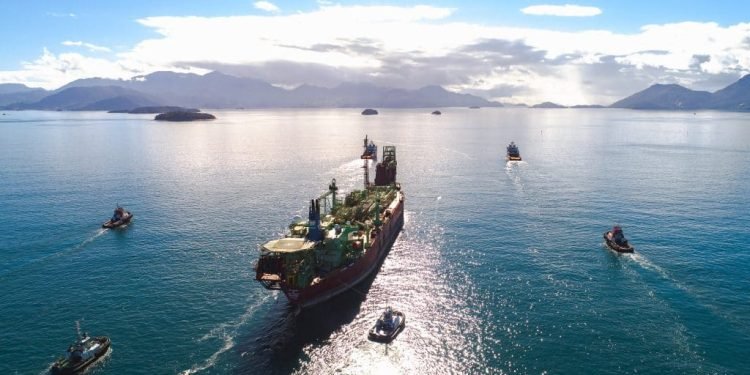Je m’excuse pour cela. Voici une autre version de l’article :
Wilson Sons’ (PORT3) terminal in Rio Grande, in collaboration with South Korean carrier Hyundai Merchant Marine (HMM) and Singapore feeder operator Bengal Tiger Line (BTL), is poised to redefine maritime logistics along South America’s eastern coast. This groundbreaking partnership aims to revolutionize container shipping services for shippers in southern Brazil, Argentina, and Uruguay, representing a significant milestone in the region’s maritime industry. By integrating a feeder service for swift cargo transfer between smaller ports and a hub terminal with a direct and optimized route between Asia and South America, this collaboration seeks to enhance efficiency and connectivity across the region.
In response to the structural challenges faced by neighboring countries, such as shallow channels limiting vessel loading capacity, this partnership offers a solution that promises to alleviate operational bottlenecks and improve connectivity with major global markets. By utilizing smaller feeder vessels to serve ports with depth restrictions and larger vessels to access deeper Brazilian ports like Rio Grande, this operational model maximizes cargo capacity, reduces transit times, and enhances service levels while promoting sustainability.
For the first time, a port in southern Brazil will serve as the initial call on the continent’s east coast for a direct route from Asia, facilitating faster transit times for cargoes from the southern region and the Plate markets. HMM’s new weekly service, the Far East-India-Latin America Service (FIL), featuring 12 vessels with a combined capacity of approximately 64,000 TEU, will cater to exporters and importers in southern Brazil, Uruguay, and Argentina.
Wilson Sons’ Rio Grande terminal will serve as a strategic logistics hub for the Southern Cone, consolidating cargo from the region and connecting to BTL’s feeder line through a strategic rotation including Rio Grande, Buenos Aires, and Montevideo. The Singapore feeder ship, Tiger Plata, will also make weekly calls, facilitating efficient integration and streamlining trade flows throughout the region.
This collaborative model ensures unprecedented call reliability and significant reductions in freight transit times, potentially saving up to four days for imported goods. The operation is scheduled to commence with the departure of the Hyundai Grace from the South Korean port of Pusan on April 16, arriving in Rio Grande on May 25.
With its strategic location, advanced infrastructure, and capacity to handle 1.4 million TEU per year, Rio Grande emerges as a definitive solution to critical logistics bottlenecks on South America’s east coast, driving optimization of the region’s logistics chain.























